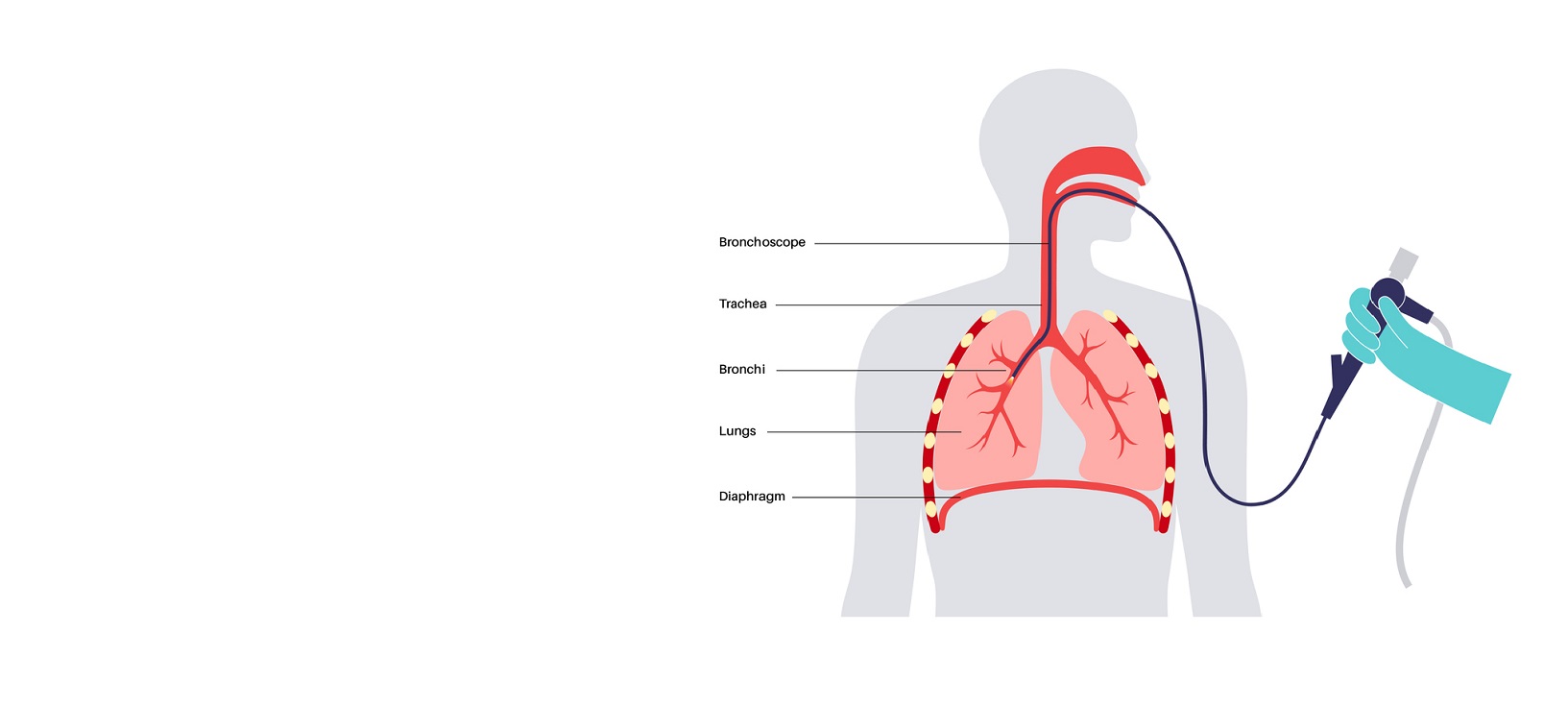Emphysema, a progressive form of chronic obstructive pulmonary disease (COPD), can severely limit...
Read More
With so many diagnostic tests available, determining which is right for you can be confusing. Learn more about two diagnostic procedures—bronchoscopy and endoscopy—including what they entail and the conditions they diagnose so you can understand which might be the best fit for your health needs.
Bronchoscopy, also known as pulmonary endoscopy, allows doctors to examine the airways and lungs. “Bronchoscopy uses a thin, flexible tube called a bronchoscope that has a camera and light at its tip,” said Scott Rosenberg, M.D., a physician at Inspira Medical Group Pulmonary. “The bronchoscope is gently inserted through the nose or mouth and down the throat into the lungs, allowing your doctor to look directly at your respiratory system and take biopsies or samples for further testing.”
Your doctor may recommend bronchoscopy if you have a persistent cough, experience difficulty breathing or receive abnormal chest X-ray results. It helps diagnose conditions like lung infections, tumors or chronic diseases such as asthma and COPD.
Endoscopy is a procedure used to examine the digestive tract. Like bronchoscopy, it involves a flexible tube, or endoscope, which gets inserted through the mouth and carefully guided through the throat to view the esophagus, stomach and the first part of the small intestine. Like a bronchoscope, the endoscope also has a camera and light, providing a clear view of the digestive tract and allowing your doctor to take biopsies and remove polyps if needed.
Endoscopies are often performed to investigate symptoms like chronic heartburn, abdominal pain, bleeding or swallowing difficulties. They help diagnose gastrointestinal conditions such as gastroesophageal reflux disease (GERD), ulcers and celiac disease.
“While both bronchoscopy and endoscopy use flexible tubes with cameras and lights to get a closer look at what’s going on inside your body and biopsy if needed, their areas of focus and the conditions they diagnose are different,” said Rosenberg. “Bronchoscopies help diagnose lung-related conditions, whereas endoscopies identify issues in the digestive system.”
Before undergoing either procedure, you’ll need to fast for several hours beforehand. For bronchoscopy, additional preparation may include avoiding certain medications. Endoscopy may involve taking a laxative to clear the digestive tract.
Bronchoscopy typically takes about 30 to 60 minutes, and endoscopy is usually a bit shorter—taking around 15 to 30 minutes. The preparation times are similar for both procedures, though the exact duration can vary based on individual circumstances.
During both procedures, you may experience some discomfort as the flexible tube is inserted through the nose or mouth and guided down the throat into the lungs or digestive system—but both bronchoscopy and endoscopy are generally well-tolerated since the sedative helps eliminate any soreness or irritation.
Recovery from both bronchoscopy and endoscopy is relatively quick. Mild throat soreness is the most common side effect. Due to the sedative effects, you’ll want to arrange for someone to drive you home afterward.
“Talk to your doctor if you’re experiencing pain or discomfort—regardless of whether it’s in the digestive tract or the respiratory system,” said Rosenberg. “Based on your symptoms and medical history, they can determine whether a diagnostic procedure like bronchoscopy or endoscopy is recommended.”
Inspira Health's pulmonologists offer comprehensive care and advanced diagnostic tools to help you breathe easily. Whether you need a bronchoscopy to investigate respiratory issues or are exploring other pulmonary treatments, our dedicated team is here to support you every step of the way. Learn more.

Emphysema, a progressive form of chronic obstructive pulmonary disease (COPD), can severely limit...
Read More
Beat seasonal allergies and enjoy a sneeze-free summer with our ultimate survival guide full of...
Read More
Mouth taping is a practice that promotes nasal breathing during sleep, which may improve sleep...
Read More